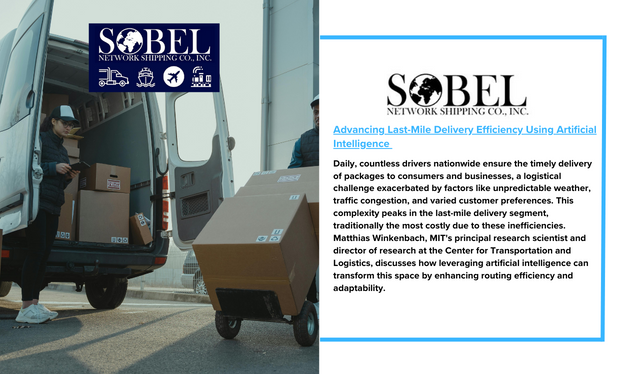Daily, countless drivers nationwide ensure the timely delivery of packages to consumers and businesses, a logistical challenge exacerbated by factors like unpredictable weather, traffic congestion, and varied customer preferences. This complexity peaks in the last-mile delivery segment, traditionally the most costly due to these inefficiencies. Matthias Winkenbach, MIT’s principal research scientist and director of research at the Center for Transportation and Logistics, discusses how leveraging artificial intelligence can transform this space by enhancing routing efficiency and adaptability.
The vehicle routing problem, a critical concern for delivery services like USPS and FedEx, involves optimizing delivery routes to connect multiple customers efficiently. This task requires detailed data about customer locations and package characteristics to determine the best sequence for stops, considering constraints like delivery windows and parking availability. Traditional operations research (OR) methods have tackled this by formulating and solving complex optimization models. However, these methods often rely on generalized assumptions due to historical data limitations.
Now, advancements in machine learning offer a new approach. By harnessing data from devices like smartphones and GPS trackers, AI models can dynamically adjust to real-time conditions and improve routing precision. Winkenbach explains that machine learning, particularly using architectures like transformers known from natural language processing, can discover patterns and optimize routes based on vast amounts of historical and real-time data. This approach not only matches but potentially surpasses traditional methods by continuously learning and adapting to new conditions.
Moreover, AI can handle the dynamic aspects of urban delivery environments more fluidly than OR-based methods. For instance, if a road closure occurs, a machine learning model can immediately suggest alternative routes, thereby maintaining delivery efficiency amidst constant changes. Additionally, unlike traditional methods that focus on specific optimization goals like minimizing costs, AI can simultaneously consider multiple complex objectives, such as reducing emissions or improving driver safety.
This pioneering work at MIT not only promises to refine vehicle routing strategies but also sets the stage for broader applications in supply chain optimization. By developing tools that can integrate and learn from complex data, AI is poised to revolutionize logistics, making it more responsive and efficient in a rapidly evolving world.


